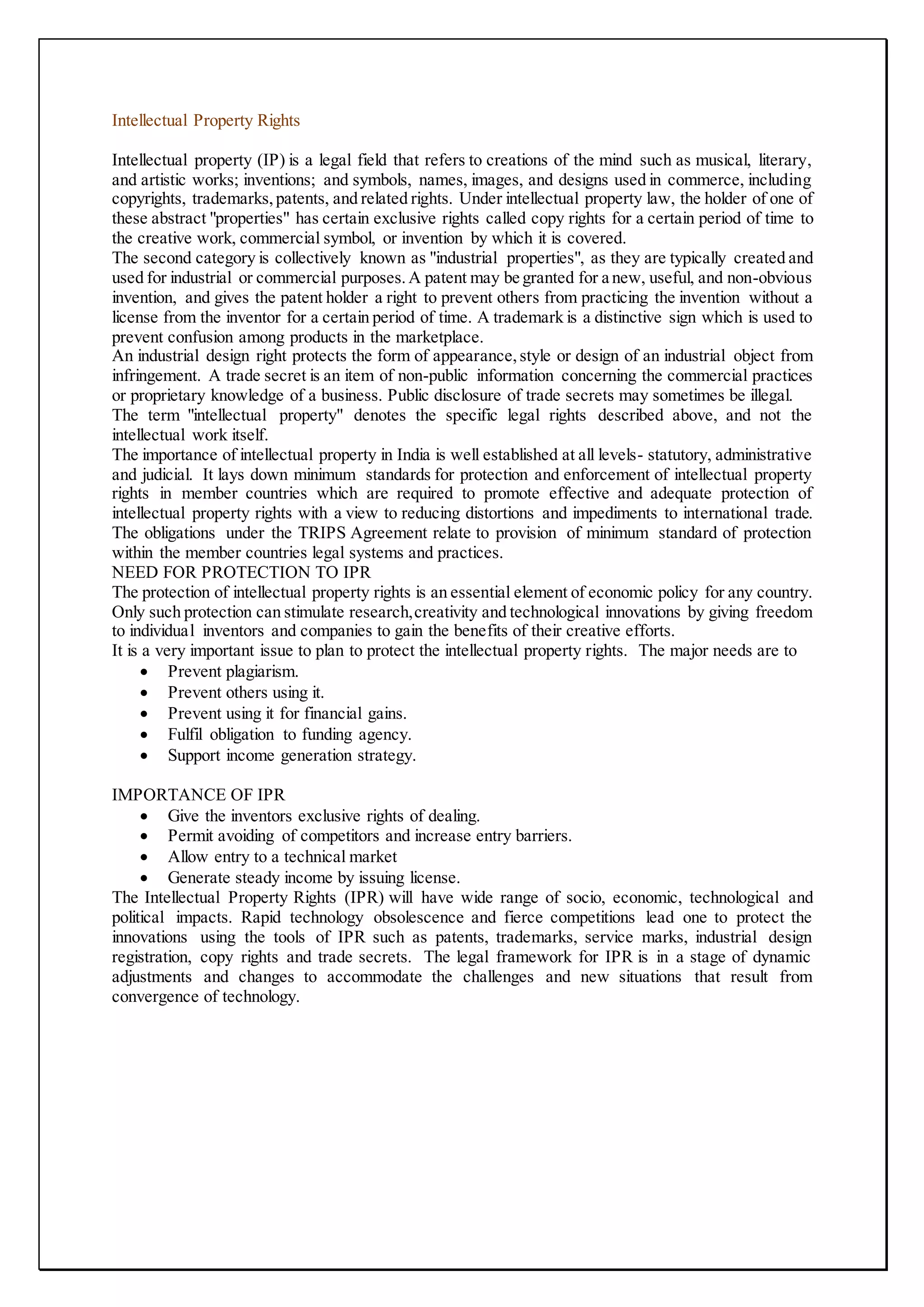Intellectual property refers to creations of the mind such as works, inventions, and symbols used in commerce. There are several types of intellectual property rights including copyrights, trademarks, patents, and industrial designs. Patents protect new, useful, and non-obvious inventions, while trademarks protect distinctive signs to prevent marketplace confusion. Intellectual property rights are important for stimulating research, creativity, and innovation by allowing individuals and companies to benefit from their work. Protecting intellectual property rights is also important to prevent plagiarism, unauthorized use, and use for financial gain.
